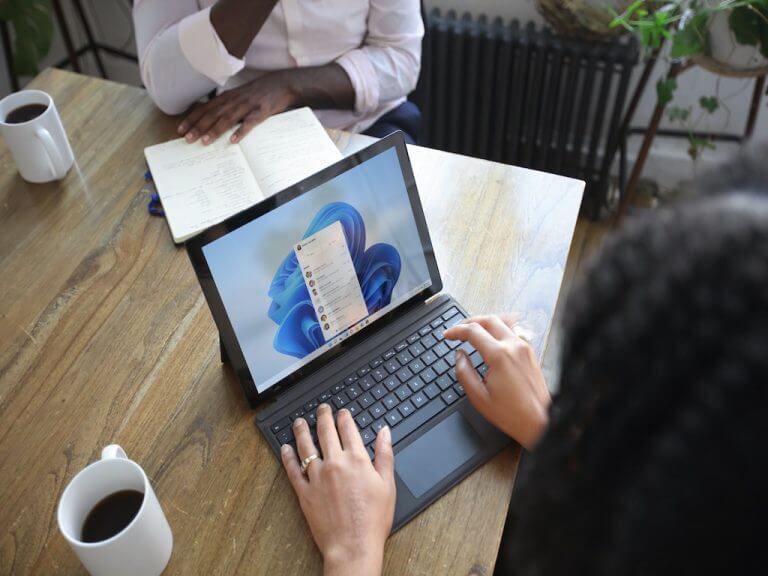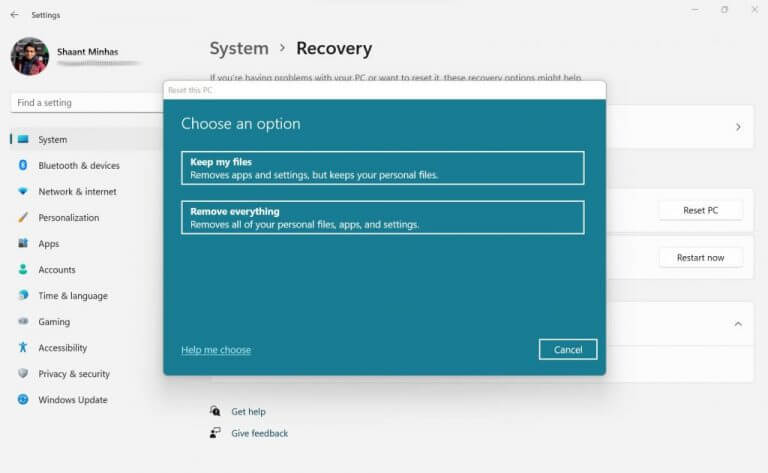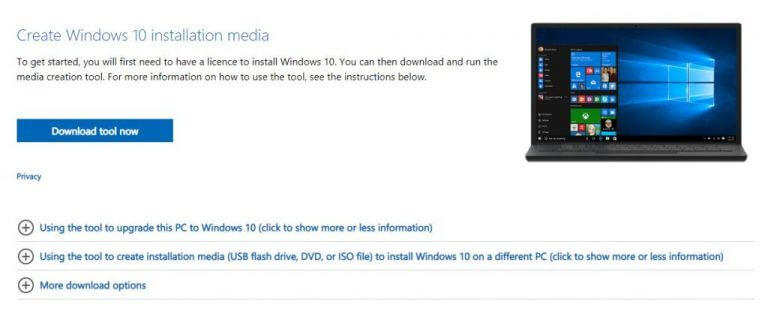Having trouble with your Windows computer? Tried everything trick in the book, but still can’t make it work normally? Don’t worry—a quick reinstall might just do the job.
Now, lucky for you, there is a myriad of different ways to reinstall Windows 10 or Windows 11. We’ll go over all of them one by one. Let’s get started with the “Reset This PC” option.
1. Reset This PC
One of the most common ways to reset a PC is through the Reset This PC option, available in the Windows Settings. Here’s how you can reinstall your Windows through Reset This PC:
- Press the Windows key + I to open Settings.
- From there, click on the System section.
- Now click on Recovery.
- From the Recovery menu, click on Reset PC.
As soon as you do this, a “Reset This PC” dialog box will pop open. From there, you can choose the following options:
- Keep My Files
- Remove Everything
If you go with Keep My Files, barring your personal files, all your apps and files in Windows will be deleted. With Remove Everything, on the other hand, everything on your PC—including your personal files—will be removed, leaving you with a clean slate of Windows.
Depending on your needs, choose either of the options and on the next screen you will get asked to either go for a Cloud download or a Local reinstall. Pick the one you’d like, and follow the instructions ahead.
Finally, you’ll be asked for confirming the reset. Click Yes and proceed with the Reset. After the reset is complete, a fresh copy of Windows 10 or Windows will be installed on your PC.
2. Reinstall your Windows from USB
Sometimes also referred to as a clean install, you always have the option to reinstall Windows 10 or Windows 11 with the help of Media Creation tool or a third-party app like Rufus.
Again, just to remind you, similar to the “Reset This PC” option from above, doing a ‘clean install’ will remove all your existing files and data. So, before going ahead with it, we’d suggest you have a solid backup in place beforehand.
To install your Windows from the USB, you’ll first need to create a bootable USB drive. Here’s how you can do that:
- Go to the official Microsoft Windows 10 or Windows 11 downloads page.
- Under the Create Windows Installation Media section, click on the Download Now button to save the files on your Windows.
- Launch the .exe file, select the recommended options, and click on Next.
- Select the USB drive, and then click on Next and select Finish.
After you have the bootable USB drive, you now need to change the boot order. This is what will actually allow you to boot from the UBS drive. Here’s how you can get started:
- Go to the Windows Settings menu.
- Select Update & Security > Recovery.
- Under the Advanced startup section, click on Restart now.
- Now click on Troubleshoot.
- From there, select Advanced options > UEFI Firmware Settings options.
- Finally, click on Restart.
Now open the Boot page and set the boot order such that your PC boots from the USB drive.
Since you’ve changed the boot order, and you also have the bootable USB drive in your hands now, all that’s left to do is reboot your PC with the USB plugged in.
Do this and your PC will boot up from USB the next time. Simply follow the on-screen instructions from here on and reinstall your Windows operating system from here.
3. Reinstall your Windows through an ISO file
If the above two methods didn’t work, don’t worry. We’ve another method in our bag of tricks, which is to reinstall your Windows through the .iso file.
This method also comes in handy at times when you just want to upgrade your PC and, therefore, don’t want to spend the whole time formatting the older version of Windows.
Here’s how you can get started:
- Go to the official website and download the ISO file from there.
- Right-click on the downloaded file and click on Mount.
- In the File Explorer, click on This PC > Device and drives and launch the mounted virtual drive.
- In the Windows Setup, select Change how to set up downloads updates.
- From there, select Not at the moment, and click on Next.
- Click on Accept to continue.
- Click on OK to continue the installation.
- In the Ready to install window, select Change what to keep.
- Finally, click on the Install button to begin the installation process.
Now, wait for a while until the installation gets complete. At this point, We’d also like to invite you to check out our expert guide that details how to revert to Windows 10 from Windows 11.
Reinstall Windows 10 or Windows 11
Reinstalling your Windows doesn’t have to be complicated. We hope our short guide reflected that and helped you reinstall Windows 10 or Windows 11 without too many difficulties. That said, be it a reinstallation or just a simple upgrade, before you take any such big actions on your Windows, make sure you back up your data securely.




